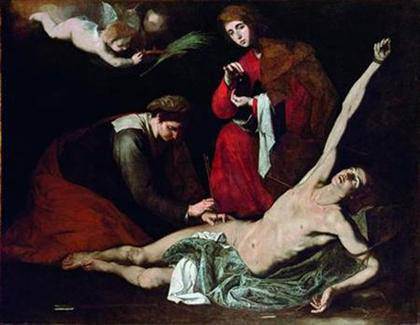David Smith
Cubi XXIII, 1964
Stainless steel, 76 ¼ x 172 ⅞ x 32 in. (193.7 x 439.1 x 81.3 cm)
Los Angeles County Museum of Art, Modern and Contemporary Art Council Fund, M.67.26
© Estate of David Smith/ VAGA, New York, photo © 2010 Museum Associates/LACMA

David Smith
The Hero, 1951–52
Painted steel, 73 ¾ x 25 ½ x 11 ¾ in. (187.2 x 64.8 x 29.8 cm)
Brooklyn Museum, Dick S. Ramsay Fund 57.185
© Estate of David Smith/ VAGA, New York, photo courtesy Brooklyn Museum
David Smith: Cubes and Anarchy at the LACMA The Los Angeles County Museum of Art pays tribute to David Smith (1906-65), widely considered the best American sculptor of the twentieth century, with a major exhibition feturing more than 100 works. On view from April 3 through July 24, 2011]]>
Source: LACMA / theartwolf.com
“Gravitation is the only logical factor a sculptor has to contend with.”
David Smith
The exhibition at the LACMA features more than 100 works, including sculptures, drawings, paintings, and photographs, many of them from the Estate of David Smith, which has also lent a group of interesting sketchbooks, only a few of which have been exhibited previously. Together, these works form the most important exhibition ever devoted to the renowned American sculptor David Smith (1906-65).
Born in Decatur, Indiana, Smith moved to New York in 1926 and joined the Art Students League of New York. Among his teachers were the painters John Sloan and Jan Matulka, who introduced Smith to the work of the cubists and the Russian constructivists, and also to progressive social movements. According to the press note of the exhibition, “Smith‘s sympathies for the cause of the American worker came in part from his own experiences. While a college student, Smith worked as a welder and riveter at the Studebaker automobile factory in South Bend, Indiana, a formative experience that introduced him to manufacturing techniques and processes”.
Smith was fascinated with the idea of using “industrial” materials and techniques to create art. He was, as the press note of the exhibition points, “intrigued by Pablo Picasso‘s and Julio González‘s welded iron sculptures that Smith had first seen in the early 1930s”. He was also very interested in the works of the Russian constructivists like Tatlin or El Lissitzky. The works of Constantin Brancusi were also a great influence to Smith, and his sculpture “The Hero” (1951-52), shown at the exhibition, is an homage to the Romanian sculptor.
Related content
World’s most expensive sculptures (including David Smith’s Cubi XXVIII)
Follow us on:


